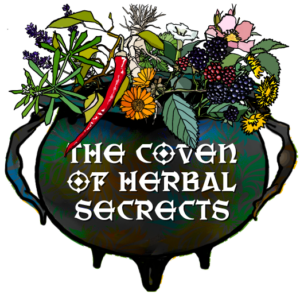Have you looked at the copious yellow flowers of the Primroses and wondered how to utilise them for your healthcare?
The familiar and beautiful welcome site of the blooming soft yellows of the primula flowers, lining many of the lanes and paths of our land are super up-lifting. We love heading out to the garden and spending a couple of blissful hours harvesting the blooms, which have a wonderful tendency to simply rejuvenate and be back within a week. We choose a dry day, around the full moon, when the plants constituents are at their highest in the above-ground or ariel parts, and go and fill a basket. The act of harvesting these gorgeous flowers always leaves a sense of feeling restored and connected, they have a simplicity and generosity to their spirit that gives clues to finding inner harmony.
These delicate blossoms are then laid out on newspaper and dried to add into herbal tea mixes. They have a wealth of medicine; for muscular aches and pains both drunk in tea form and added to the bath, stress and tension, you just need to take a sip and feel the gentle relaxing caress of these little fairy flowers.
Over the centuries, Primroses have been cultivated to be extremely colourful. They are originally perennials of Europe and are not actually related to the rose. Among the first to bloom as winter retreats, they’ll multiply each year if given a little shade and moisture but they hate having wet feet to do not thrive in soggy clay soil.
The medicinal variety is Primula vulgaris.
It is such a delight to see the delicate pale yellow creamy blooms of the Primrose lining the pathway of the front garden towards the front door. Bringing their gentle energy and gifting feelings of calm to our lives.


Medicinal Propeties of Primula
Primula vulgaris is often used as a remedy for muscular cramps, headaches and as a sedative. We steep the flowers with other herbs to make a delicious tea.
In the early days of medicine (AD 23/24–79) Pliny speaks of the the Primrose as an important remedy in muscular rheumatism, paralysis and gout. We employ the blooms as an anti-cough tea specifically as an anti-spasmodic and expectorant, it’s been super useful with families and our kids have grown up grazing on the flowers from the garden. Primula is an excellent expectorant due to saponins and tonic to the respiratory and nervous system. It also contains salicylates, which are the main ingredient of aspirin and have anodyne, anti-inflammatory and febrifuge effects.
Over all the vibe of this wonderful plant is cooling, soothing and relaxing –and most of us can benefit from these qualities especially at this time of intense action as all of nature wakes up around us with the beginnings of SPRING.
‘Primrose Tea,’ says Gerard, ‘drunk in the month of May is famous for curing the phrensie.’ We can see here that primroses have long been considered useful against nervous of hysterical disorders.
There are two kinds of flowers, externally looking identical, but are differently constructed. Only one kind is found on each plant, never both, one kind being known as ‘pin-eyed’ (with the capita of the style prominent) and the other as ‘thrumeyed’ (with the stamens prominent).

In both, the green-tubed calyx and the pale yellow corolla of five petals, joined into a tube below and spreading into a disk above are identical, but in the centre of the pin-eyed flowers there is only the green knob of the stigma, looking like a pin’s head, whereas in the centre of the thrum-eyed flowers, there are five anthers, in a ring round the tube, but no central knob. Farther down the tube, there are in the pin-eyed flowers five anthers hanging on to the wall of the corolla tube, while in the thrum-eyed, at this same spot, is the stigma knob.
Fertilisation can only take place between pin and thrum plants. Pin to pin and thrum to thrum pollination is ineffective.
It was Darwin who first pointed out the reason for this arrangement. Only a long-tongued insect can reach the nectar at the base of the tube and when he starts collecting the nectar on a pin-eyed flower, pollen is rubbed on the middle part of his proboscis from the anthers midway down the tube. As he goes from flower to flower on the same plant, there is the same result, but when he visits another plant with thrum-eyed flowers, then the pollen on his proboscis is just in the right place to rub on the stigma which only reaches half-way up the tube, his head meanwhile getting pollen from the long stamens at the throat of the tube, which in turn is transferred to the tall stigmas of the next pin-eyed flower he may visit. Thus both kinds of flowers are cross-fertilised, clever nature eh!

Don’t stop reading yet…!
If you want to know the more about Herbs that grow around you why not join our Coven? You’ll soon have access to our best resources while increasing your confidence and knowledge about the magic of herbs and master the art of herbal remedy creation, spells and rites, plus step by step guides to getting to know your plants better.
Plants are calling YOU
The Seed SistAs are passionately dedicated to shining a light on herbal education and bringing back where it belongs, into your hands. Caring for and nurturing our bodies with herbs could be something that we are taught about throughout life.
At Sensory Solutions Herbal Evolution, we have a mission, to connect people to their wild spaces, re-educate society about the lost art of medicinal herbalism and inspire communities to grow together through initiating the growing of community medicine gardens.





